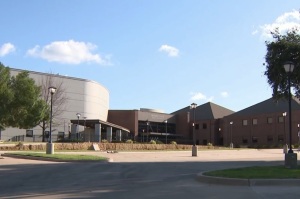Immigration: Are We Saving the Wrong Children?
Two years ago in the northeastern Chinese city of Harbin, the brand new $300 million dollar Yangmingtan Bridge collapsed without warning. Privately, experts speculated that costs had been cut during construction, making the bridge an accident waiting to happen. Here in America, we also have many social accidents waiting to happen. For example, our own southern border security is so weak that it too is ready to collapse at any moment, with the right amount of pressure. Therefore, rescuing the wrong children could compromise our national security.
According to the Department of Homeland Security, the number of unaccompanied children trying to enter the United States illegally has nearly doubled in less than a year. U.S. Customs and Border Protection reports detaining about 50,000 children since last October, with thousands more crossing undetected. The children's presence is complicated by the fact that 75 percent appear to be from Central America-mostly Honduras, Guatemala and El Salvador-and so they are more difficult to repatriate than Mexicans. The surge is far beyond the capacity of our holding centers, so hundreds are being bussed and flown to various military bases and other areas around the country.
Many of the children are suffering from contagious illnesses, including but not limited to scabies, lice, strep throat, measles, chicken pox and swine flu. Public health experts are also worried about diseases like tuberculosis, which can be contracted through the air. Texas Border Patrol Agent Hector Garza told Breitbart that 70 percent of Border Patrol agents were now reassigned to caring for the unaccompanied minors rather than monitoring the border.
The reasons so many children would risk such a terrible journey are not difficult to discern. The average per capita income in Honduras in 2013 was about 2000 U.S. dollars, and between $3,000 and $4,000 in Guatemala and El Salvador. The poorest in these countries live on just dollars a day, while various gangs control large portions of the towns.
Central American newspapers also appear to be encouraging the practice. La Prensa, a Honduran newspaper, and Diaro El Mundo in El Salvador have run reports suggesting that unaccompanied children crossing illegally will be provided with food, shelter, clothing and medical care while any relatives they may have in the United States are located and a decision is made about whether they can stay.
Smugglers, or coyotes, are adding fuel to the fire. According to Reuters:
"Coyotes are spurring on migrants by putting out the word that pregnant women and unaccompanied minors are treated more leniently and allowed to stay in the United States, although the Obama administration insists they will be returned home…[A teacher in Guatemala] said parents pulled 22 children aged 5 to 14 out of the school between February and May, all bound for the United States."
When so-called immigration reform advocates tout lenient immigration policy as "compassionate," they ignore the realities of the process. Children and adults who make the journey to the Rio Grande, largely on foot, are often malnourished and dehydrated by the time they arrive. Some never make it at all; the body of an 11-year-old discovered in June in Hidalgo County, Texas, was just one of many. Mass graves have been unearthed in rural areas, just miles from the Mexican border. Neither do those who survive the journey arrive unscathed; it is not uncommon for unaccompanied children to face sexual assault and beatings.
The Americans who will bear the brunt of the influx of illegal immigrants over our southern border are not the policy makers in Washington or the supposedly compassionate elites in New York or San Francisco. It is mostly Latino communities that will be exposed to communicable diseases and crime as more and more unscreened individuals make their way into the general population.
Furthermore, lower income Americans will find entitlement benefits strained, as programs like food stamps and subsidized housing are forced to stretch to cover millions of new recipients. Tragically, the American Federal government cannot effectively care for the entire world's poor. If it could, we should be sending boats and planes to rescue the millions of children in South America, Africa and Southeast Asia who face conditions equal to or worse than those in Central America.
At this point, I think it is fair to ask the question if greater fencing along our southern border would be more compassionate than a porous, understaffed border that entices desperate people to take fatal risks with themselves and their children. Fences have worked for Israel, which shares a border with neighbors far more hostile than ours, and as some pundits have pointed out, there is a fence around the White House. When we send mixed signals to the world about our intention to enforce our immigration laws, we encourage false rumors, empower coyotes, and put millions of lives in jeopardy.





























